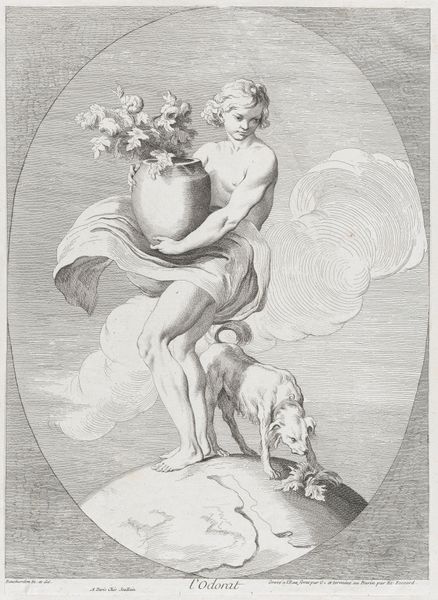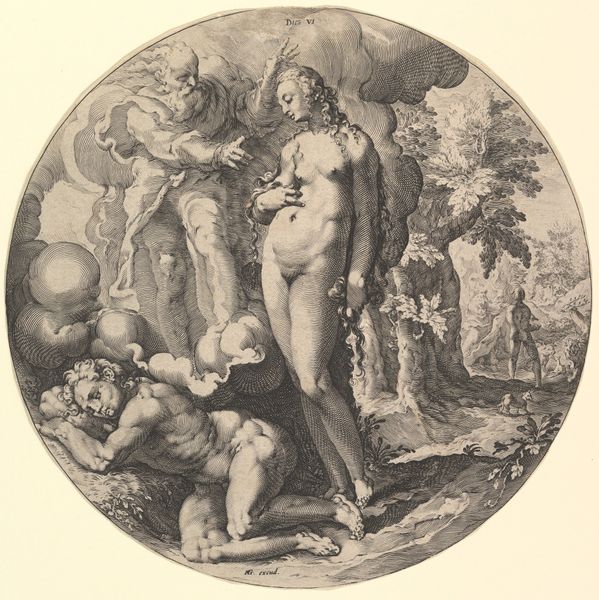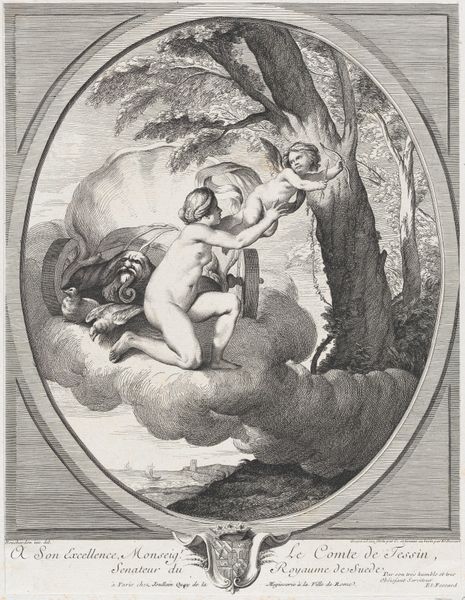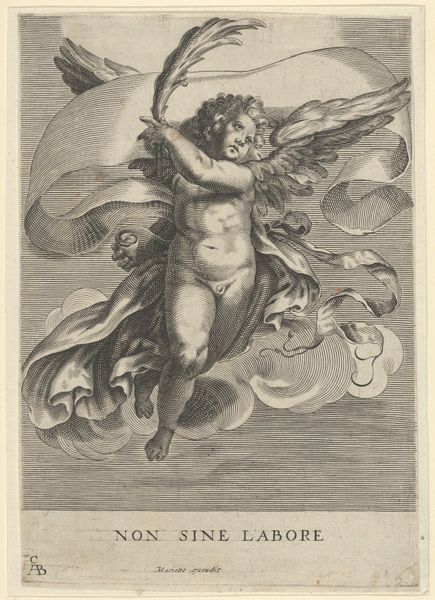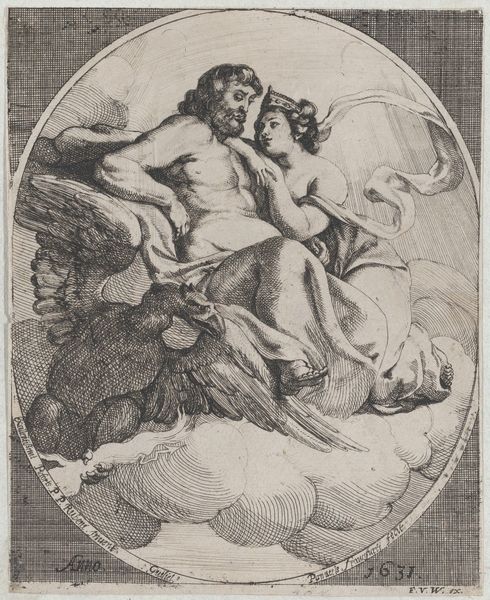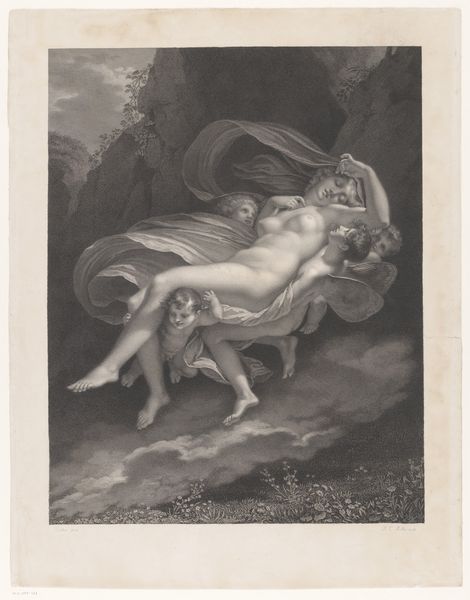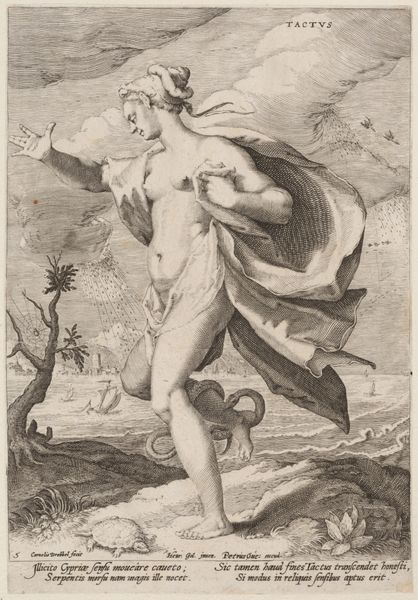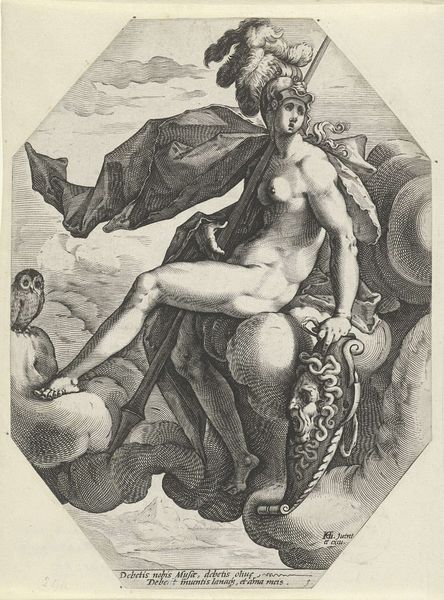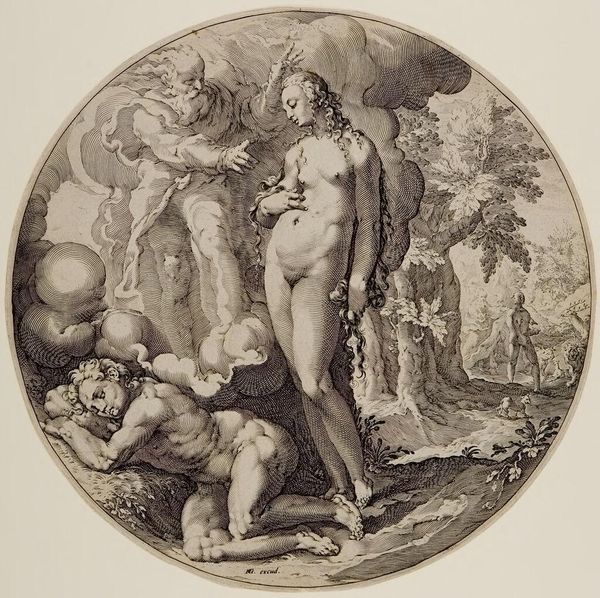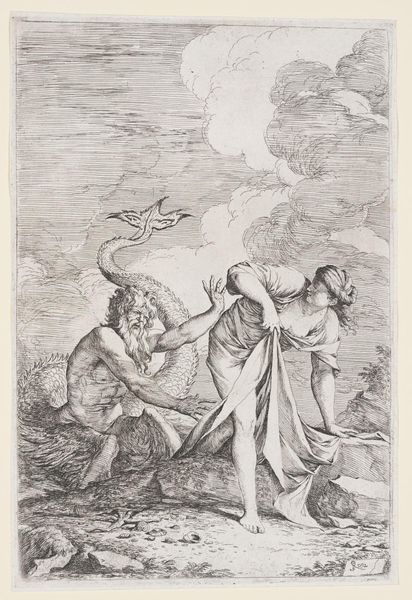
drawing, print, engraving
#
drawing
#
allegory
#
baroque
# print
#
figuration
#
female-nude
#
nude
#
engraving
Dimensions: Sheet (trimmed): 15 11/16 × 11 7/16 in. (39.8 × 29.1 cm)
Copyright: Public Domain
Curator: Here we have "Touch," an engraving made between 1730 and 1765, attributed to Anne Claude Philippe Caylus. It is now held in the collection of the Metropolitan Museum of Art. Editor: It's striking how this image emphasizes a direct connection to the physical world. The muscular nude, the texture of the bird's feathers – it’s all about palpable presence. Curator: Indeed. It's an allegory for one of the five senses. We see the figure holding a bird, quite literally "touching" it. But the broader social context points to the intellectual obsession with classification during the Enlightenment. Consider the rise of museums and encyclopedias in this period, mirroring humanity’s quest to categorize and contain the world. Editor: Look at how the engraver created such contrasting textures – smooth skin versus rough feathers. This makes me think about the labor involved: the painstaking process of transferring this image to a copper plate, the decisions about line weight and hatching to simulate different tactile qualities. And why render an allegory of the senses using the reproducible medium of print? Curator: The figure is standing atop the world with a tortoise, and wreathed in clouds – so we are dealing with representations of the earth, the air. Engravings played a critical role in disseminating knowledge widely. The figure touches not just the bird but knowledge itself. Editor: It almost feels like the engraving is a physical manifestation of this allegorical 'Touch', allowing countless viewers over centuries to 'feel' this image through its materiality. And even consume and share the allegory through the printed medium itself. Curator: Exactly. It allows for social commentary and critique, too. How "touch" as an allegorical concept interacts with ideas about property, access, and societal regulation of our very senses. Editor: Thinking about the lines and curves needed for this engraving makes one really appreciate the manual effort behind creating illusory textures. It bridges between the intellectual concept and sheer labor to craft it physically for all to 'touch' with their eyes. Curator: Reflecting on it, this artwork shows how social dynamics influenced artistic approaches to our understanding of sensory perception. Editor: And considering the artist's meticulous attention to textures and their reproduction using copper, it reminds us that an allegory isn't just about ethereal concepts. Rather, also about making concrete, engaging materials, processes and labor.
Comments
No comments
Be the first to comment and join the conversation on the ultimate creative platform.

